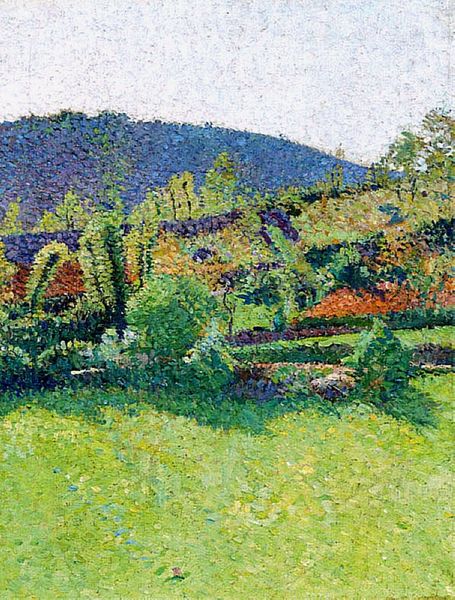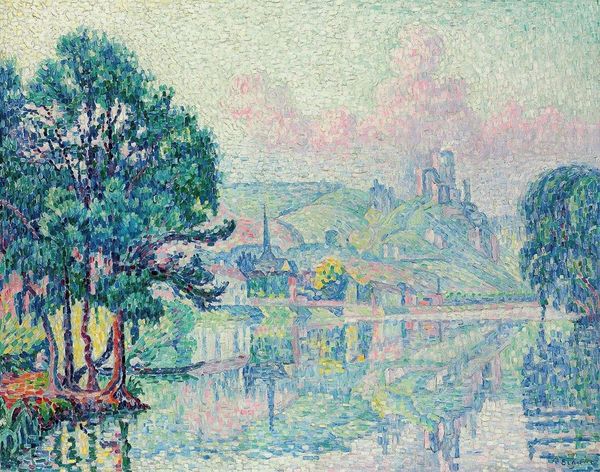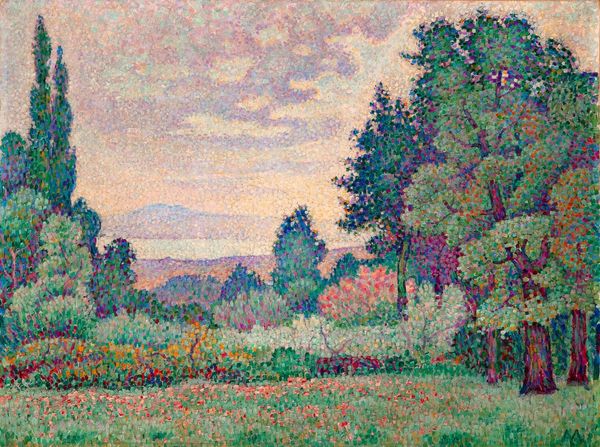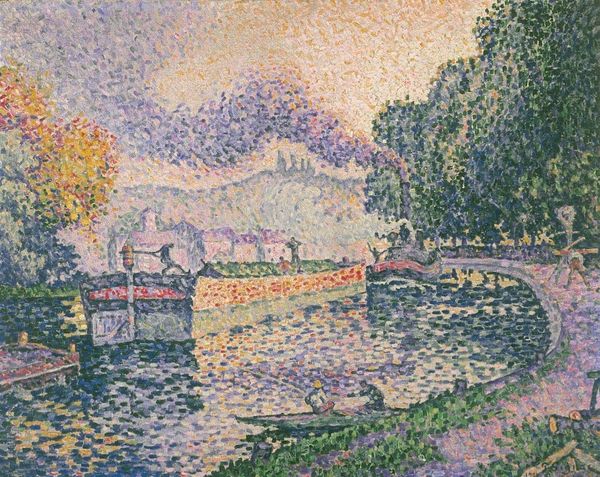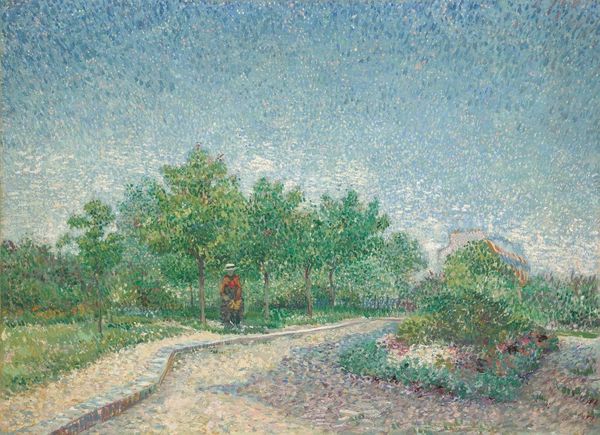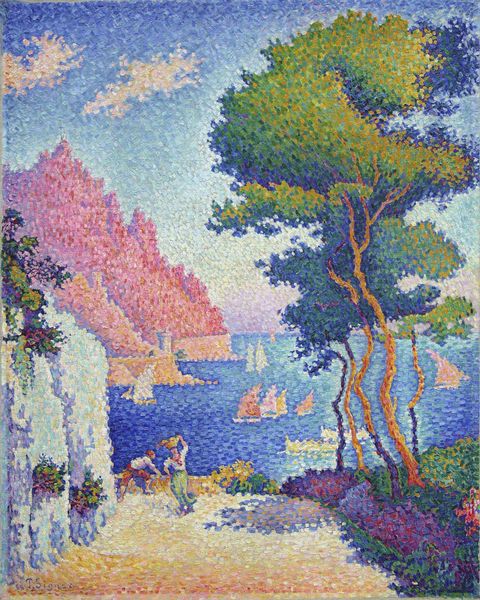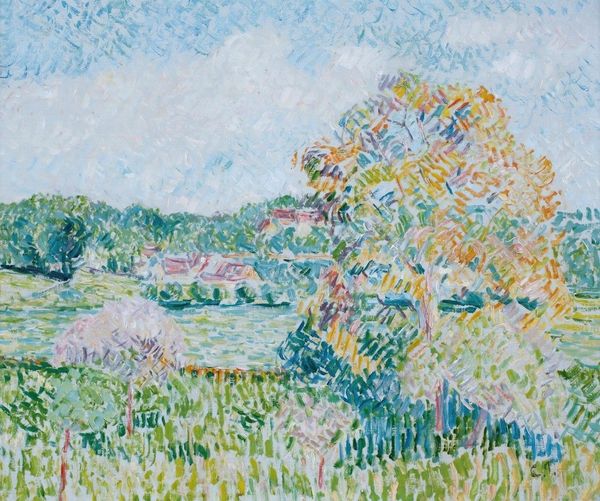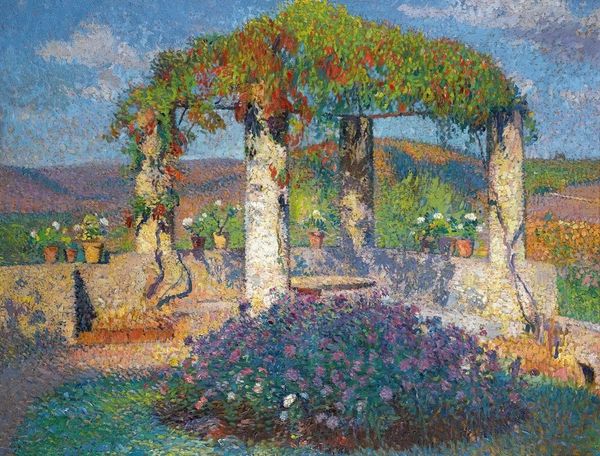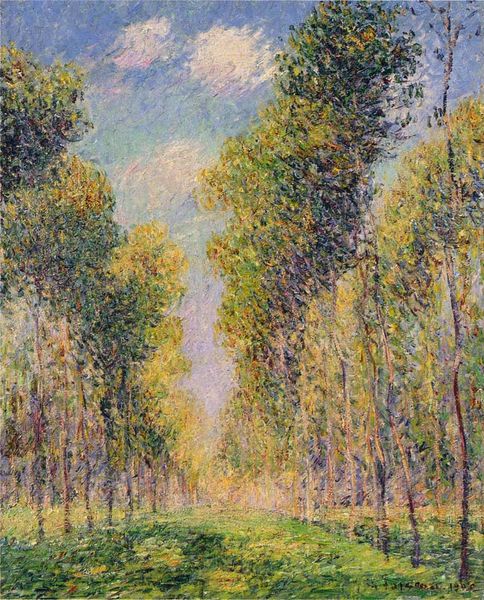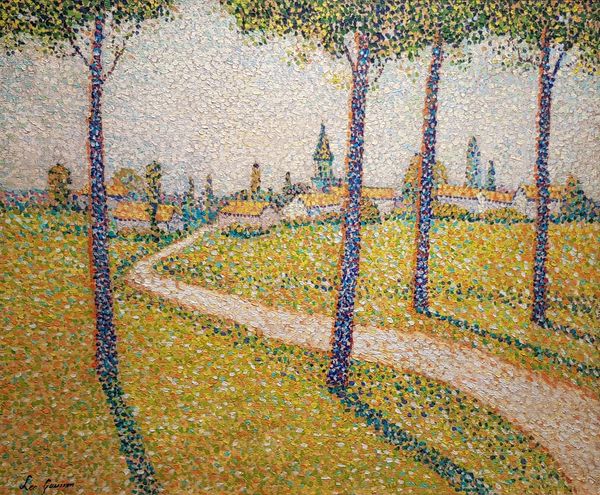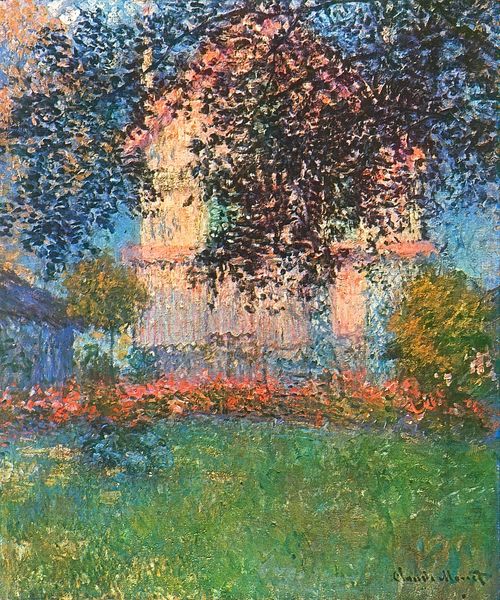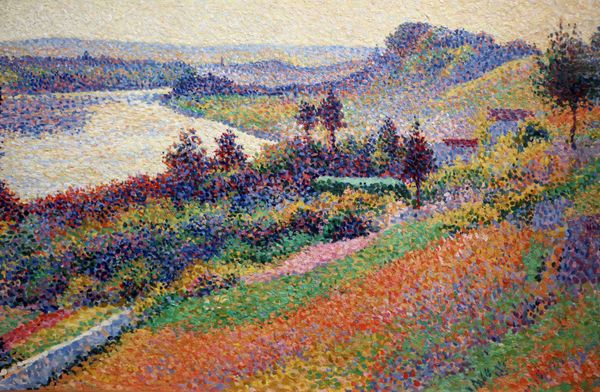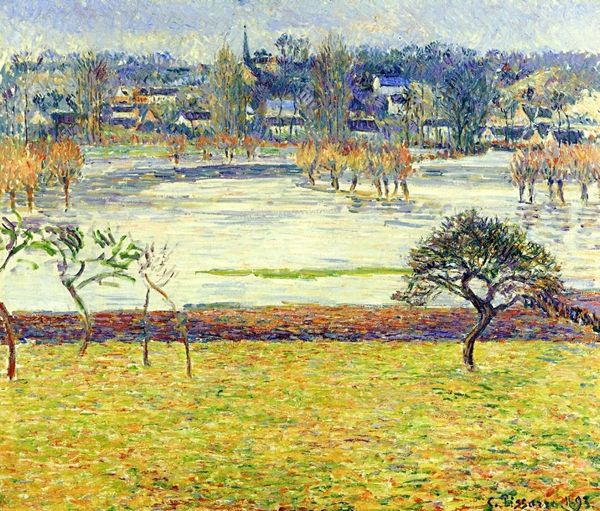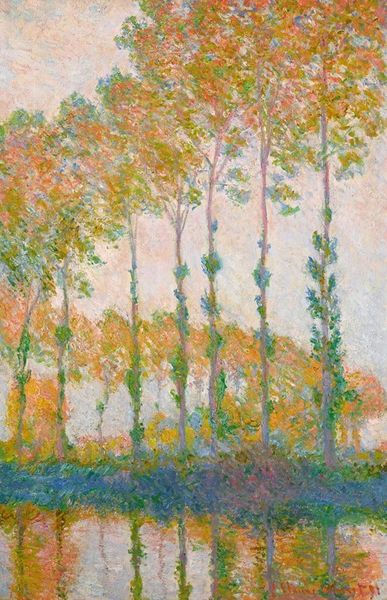
Copyright: Public Domain: Artvee
Editor: Paul Signac's "Terrasse De Meudon," painted in 1899 using oil on canvas, is a fantastic display of divisionist technique! The landscape shimmers, almost dissolving into pure light. It feels very calm, peaceful. What strikes you about this particular piece? Curator: What strikes me is the insistent geometry of the image; not just in the trees or wall, but in the application of paint itself. See how each daub of color acts as a pixel, a tiny building block in a larger symbolic language? It evokes Byzantine mosaics; a connection, perhaps, to the way pre-Renaissance art conveyed spiritual meaning through codified imagery. Signac, through divisionism, may be re-sacralizing the landscape. Editor: That's fascinating, the connection to Byzantine mosaics. I hadn't considered that at all. So you see more than just a pretty landscape; you see a deeper symbolism at play? Curator: Precisely! Think about the Pointillist technique itself. Each point is separate, yet together they create a cohesive image. Does that sound like anything familiar? A family, a community, perhaps? Signac, like many Post-Impressionists, wrestled with modern life; the push and pull of individual and collective experience is baked right into his technique. It is a kind of utopian vision expressed via scientific rigor. Editor: Wow. So the dots aren't just about light and color; they are also about… people? That’s a mind-blowing interpretation. Curator: I suggest looking closer at the painting's other compositional devices that express utopian ideas, even in the somewhat mundane subject matter, but that is another story. I hope you now recognize that art isn't always just about what we see but what is hidden inside the language of symbols. Editor: I certainly do. Thank you. This painting is far more complex than I initially realized.
Comments
No comments
Be the first to comment and join the conversation on the ultimate creative platform.
